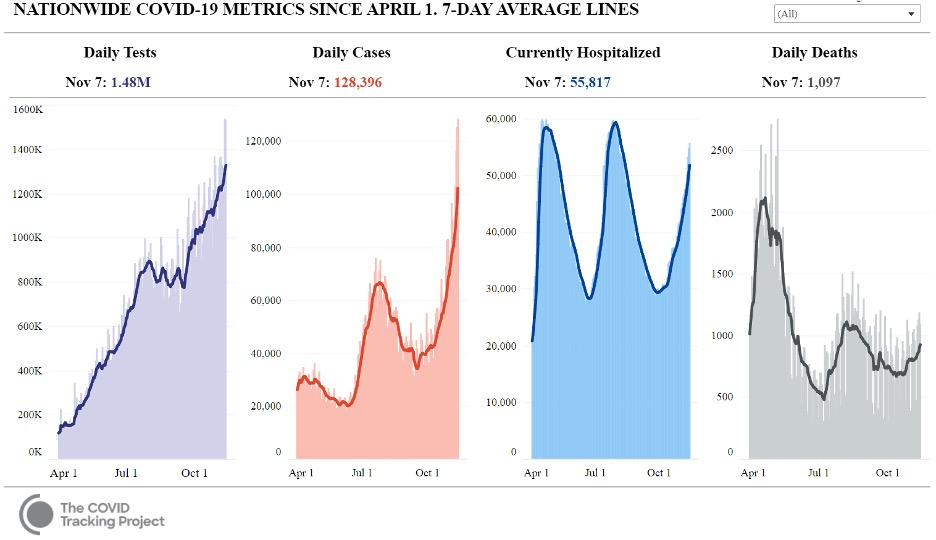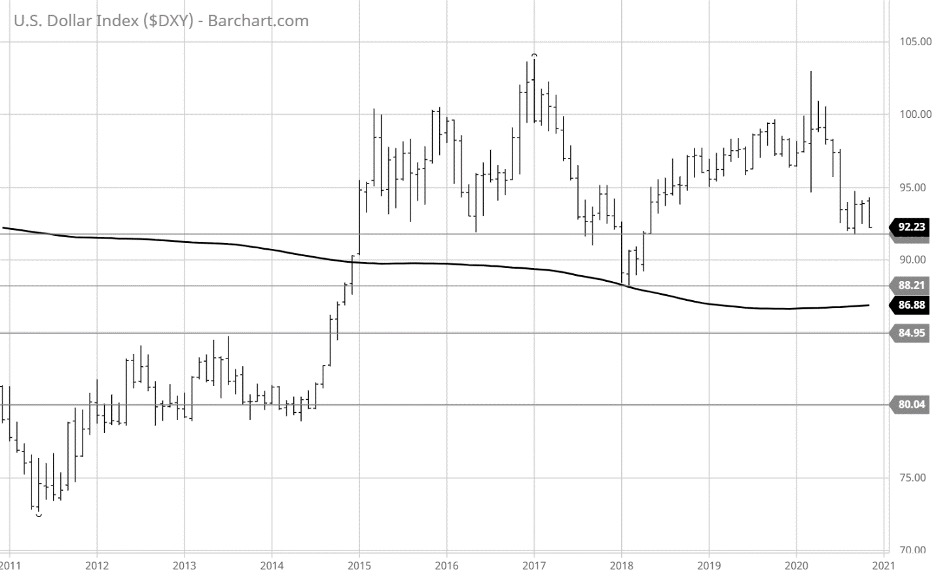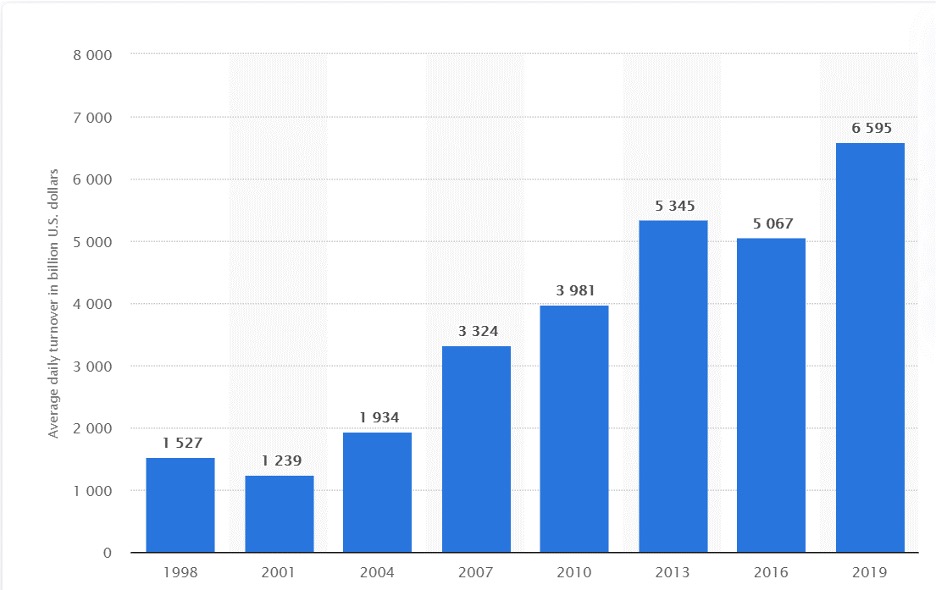Big Headlines Lead to Big Market Gains
By: Bryan Perry,

With a relief rally underway, as it is becoming broadly accepted that Joe Biden will indeed occupy the White House, there are some weighty issues for the market to contend with what will now become more front and center in the days and weeks ahead.
Third-quarter earnings season delivered a fantastic scorecard of top-and-bottom-line results, surpassing even the most optimistic of forecasts. The V-shaped economic recovery showed continued momentum into the current quarter on the back of broad upward guidance by a plethora of leading companies from all sectors.
The fourth quarter is likely also to show some rosy economic and corporate earnings data, closing out 2020 in a bullish fashion. But it’s the first quarter of 2021 that could provide some resistance to the bull trend if certain events don’t unfold in what could be described as the right way. They are no secret and just happen to be converging now at the same time.
The most glaring is the surge in coronavirus data as the weather turns colder and the likelihood that a vaccine, if even widely accepted by the public, won’t be available for several months. There is a rising sense of urgency as new cases surge to more than 100,000 per day with both hospitalizations and fatalities also moving in the wrong direction.

Thankfully, news of Pfizer’s vaccine having a 90% efficacy rate was encouraging and put a fierce bid under the epicenter stocks (airlines, hotels, casinos, cruise lines, live entertainment, restaurants, theme parks, movie theatres) and industrial stocks.
Next is the certainty of the two special elections to be held in Georgia where both Republicans are slight favorites. However, leading up to the Jan. 5 runoffs, there will be hundreds of millions of dollars spent to push both Democrats to victory, taking the Senate to an evenly split 50-50 count between Democrats and Republicans to give Vice President-elect Kamala Harris the critical swing vote.
“All eyes will be on Georgia for the next two months,” Emory University Political Science Associate Professor Andra Gillespie said. “There will be record spending, unprecedented campaigning and tons of mudslinging in these races — more than what we’re used to seeing.”
A win by both Democrats would secure a blue wave that will most surely change the current investing landscape.
Plus, the notion of further big spending in Washington as a stopgap on the impact COVID-19 is having on small business and specific industries, like the airlines, is weighing on the value of the dollar. While its recent slide is not setting off any alarm bells, that would not be the case if the Dollar Index (DXY) trips down to the 88.0 level.

Most currency watchdogs don’t consider this slide in the greenback to be a major risk to the stock market, citing it just helps to boost profits for America’s multi-national corporations, which is true. It’s just whether an undertone of concern starts to emerge because of the rapid expansion of the national debt and the trajectory of future spending, no matter the composition of Congress.
A weaker dollar that only gets weaker will drive the cost of foreign-made goods higher that is passed on to consumers and also pressures Treasury yields higher to satisfy buyers of debt where the underlying currency is in decline. At the present, this is not a major talking point among the financial media outlets but is well worth monitoring.
If this weak dollar scenario becomes more material, then the role of the Fed becomes significant. When a decision is made to support the dollars’ price against another currency, the foreign exchange trading desk of the New York Fed buys dollars and sells the foreign currency; conversely, to reduce the value of the dollar, it sells dollars and buys the foreign currency.
Fed Chairman Jerome Powell consistently has reminded the markets that they have plenty of ammo to fight deflation, encourage inflation and support King Dollar, as required. The foreign exchange, or forex, market is the largest financial market in the world — larger even than the stock market with a daily volume of $6.6 trillion, according to the 2019 Triennial Central Bank Survey of FX and OTC derivatives markets.
How much the Fed can really influence the direction of the greenback in a world awash in liquidity hasn’t been tested. And this creates an x-factor for markets that are not fond of uncertainty and unknown quantities. Again, not a red flag, but something to be watchful of if dollar weakness picks up speed.
Average daily turnover in the global foreign exchange market from 1998 to 2019:
(in billions of U.S. dollars)

Source: Statistica.com
While I raise these talking points, it’s important to note the market’s optimism about such events. There are no less than 11 vaccines in Phase 3 clinical trials. If just a late-stage readout signals a breakthrough therapy is ready for global distribution, then market perception will remain very upbeat. And Pfizer may be on the verge of delivering what the world is seeking.
The GOP’s tenuous hold on control of the Senate until the Jan. 5 runoff Senate elections in Georgia is how the market sees this outcome in the making. It also is the consensus among currency traders that the Fed has the firepower to support the dollar against a material decline.
From this standpoint, it’s not wise to fight the tape as fund flows into stocks of late are a strong vote for the bullish camp. The market is a forward-discounting mechanism and the points I’m raising today, if negative at all, won’t be felt for several months out. So, in the meantime, enjoy the ride, but don’t be complacent. Be alert for sudden changes.








